An Online Exhibit: What Do We See?
/ Visual Communications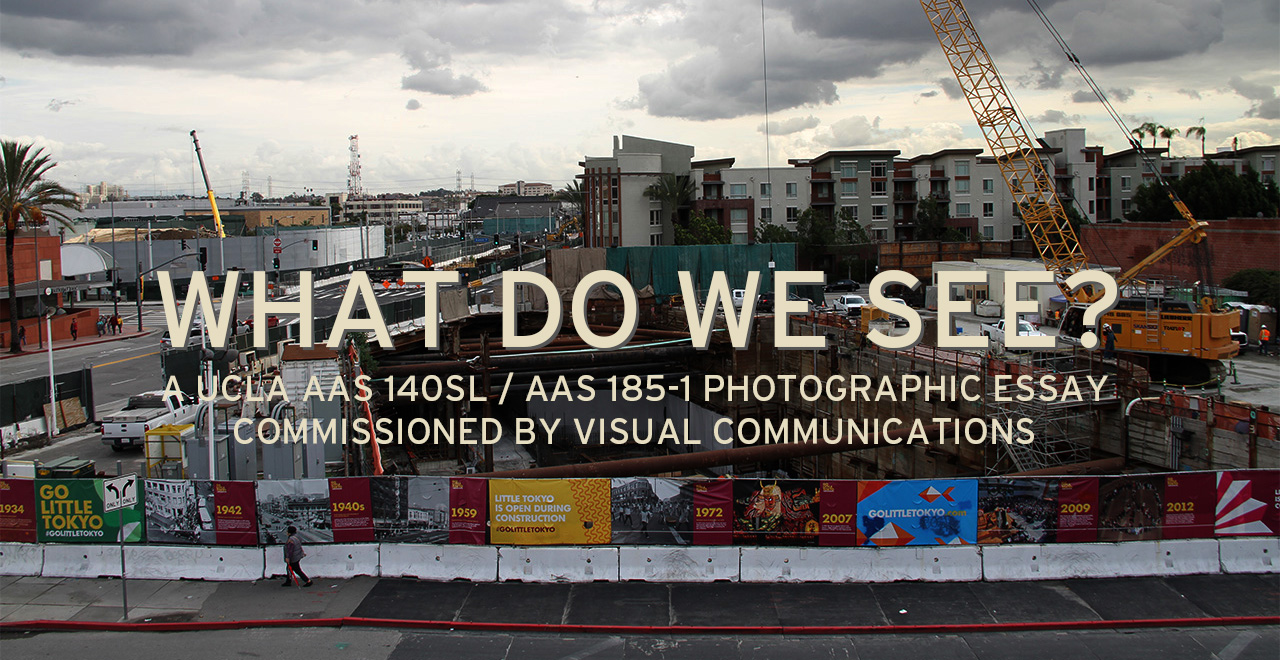
EDITOR’S NOTE (From Visual Communications’ Archives & Distribution Manager Abraham Ferrer) : As part of a final project for Winter Quarter, student interns from UCLA’s Asian American Studies 140SL and 185-1 Capstone classes were challenged to cast a cold eye on the Los Angeles Little Tokyo community outside the confines of Visual Communications’ home at the Union Center for the Arts. This online exhibit — the first of hopefully many — compelled the interns to use equipment that many of them have never handled before (for instance, may have never used a digital SLR camera) and “see” the community through a critical lens, the better to understand the consequences of change throughout Little Tokyo. Their exhibit, annotated by their curatorial statement and individual picture notes lightly edited for spelling and grammar, are displayed below.
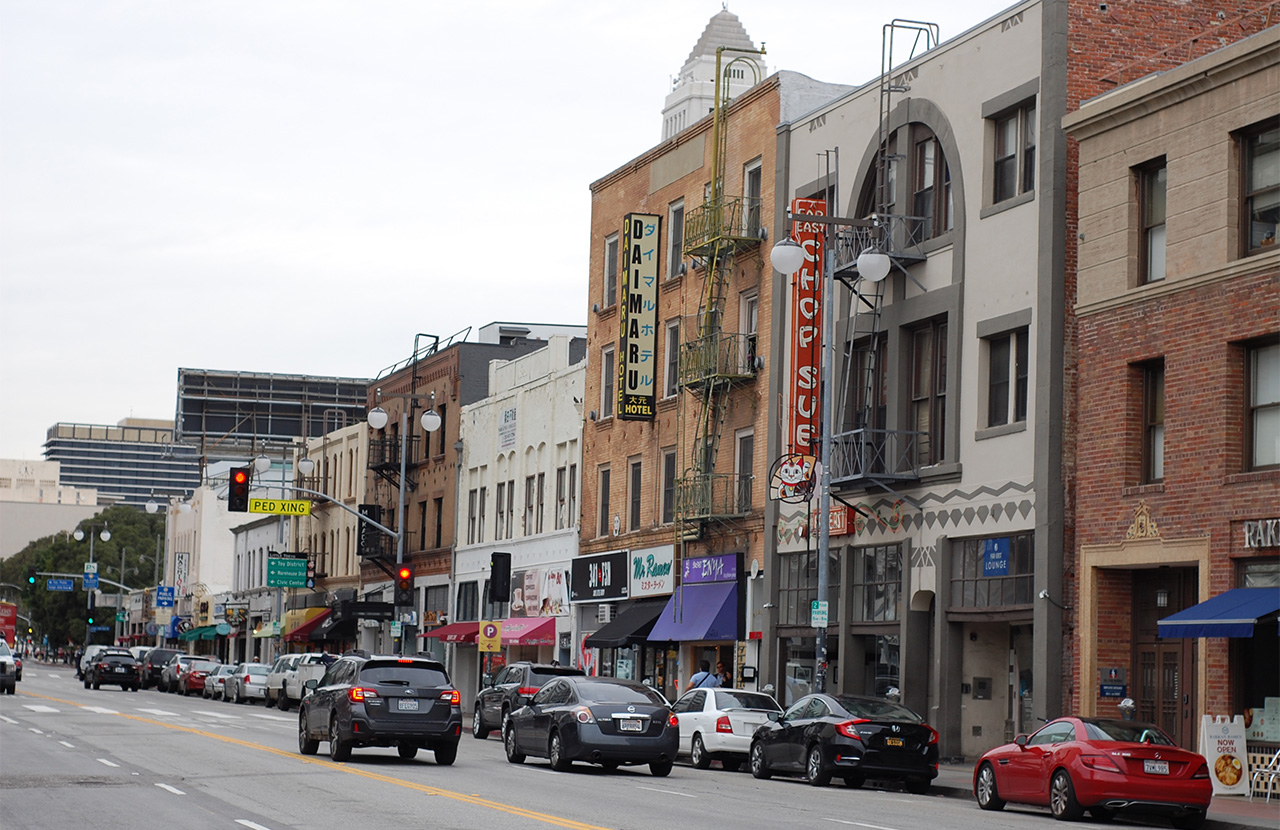
In The Midst of Gentrification
February 19, 2019, E. 1st Street and S. Central Ave.
This is my view from East 1st Street. The side I am standing on sits the Japanese Village Plaza, where tourist come into the modern cafés, gift shops, boba shops, and restaurants. What you're seeing is Little Tokyo's historical landmark. The L.A. Times has said L.A. County has fifteen historical landmarks, and this is among the first neighborhood landmarks. The low rise brick buildings and mom-and-pop shops are gems to this community. This street is currently threatened by the surrounding gentrification and market rates developments surrounding it.
— Kevyn Lorenzana
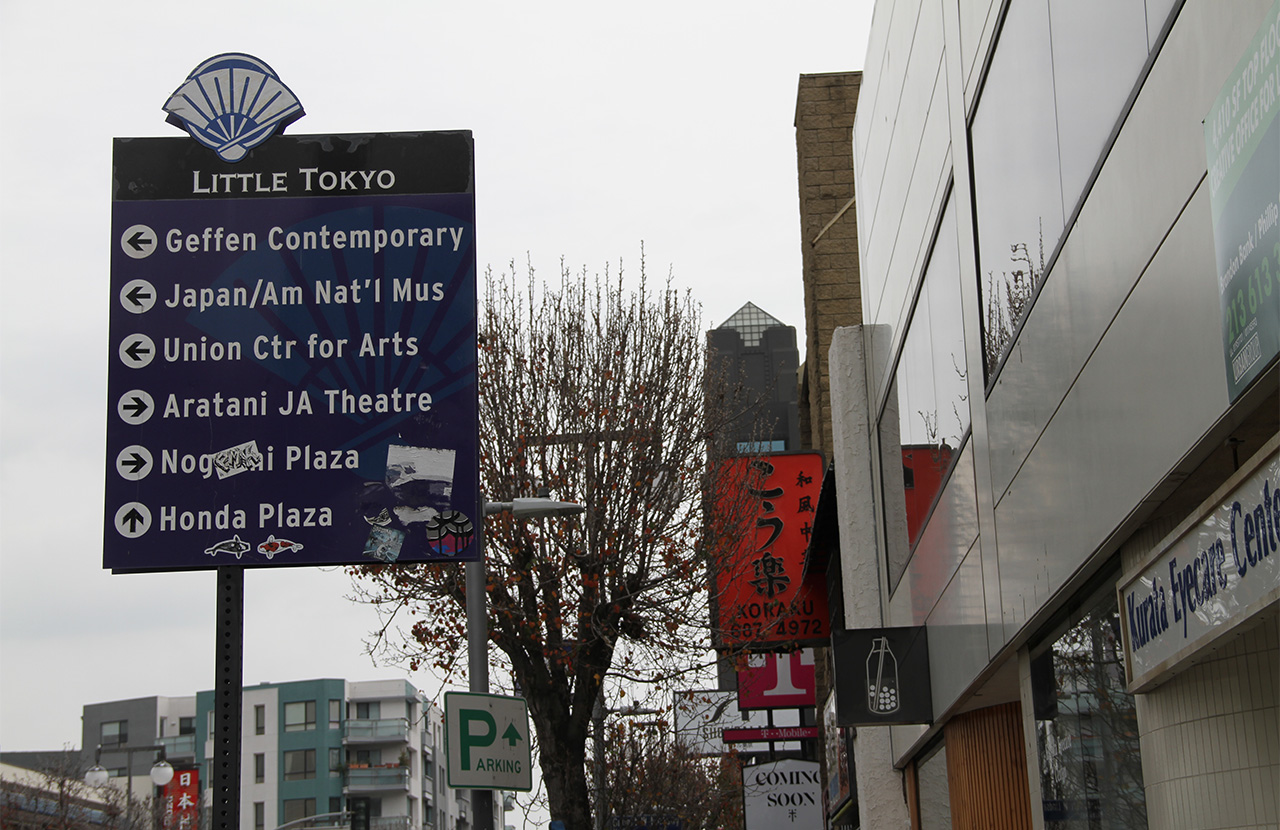
All That’s There?
2nd Street, in front of Kouraku
These signs are all over Little Tokyo and they are physical representations of the generalization and erasure of Little Tokyo’s many stories. Interestingly, the Geffen Contemporary is first on this list of attractions in Little Tokyo instead of Japanese American establishments.
— Jason Ordonio
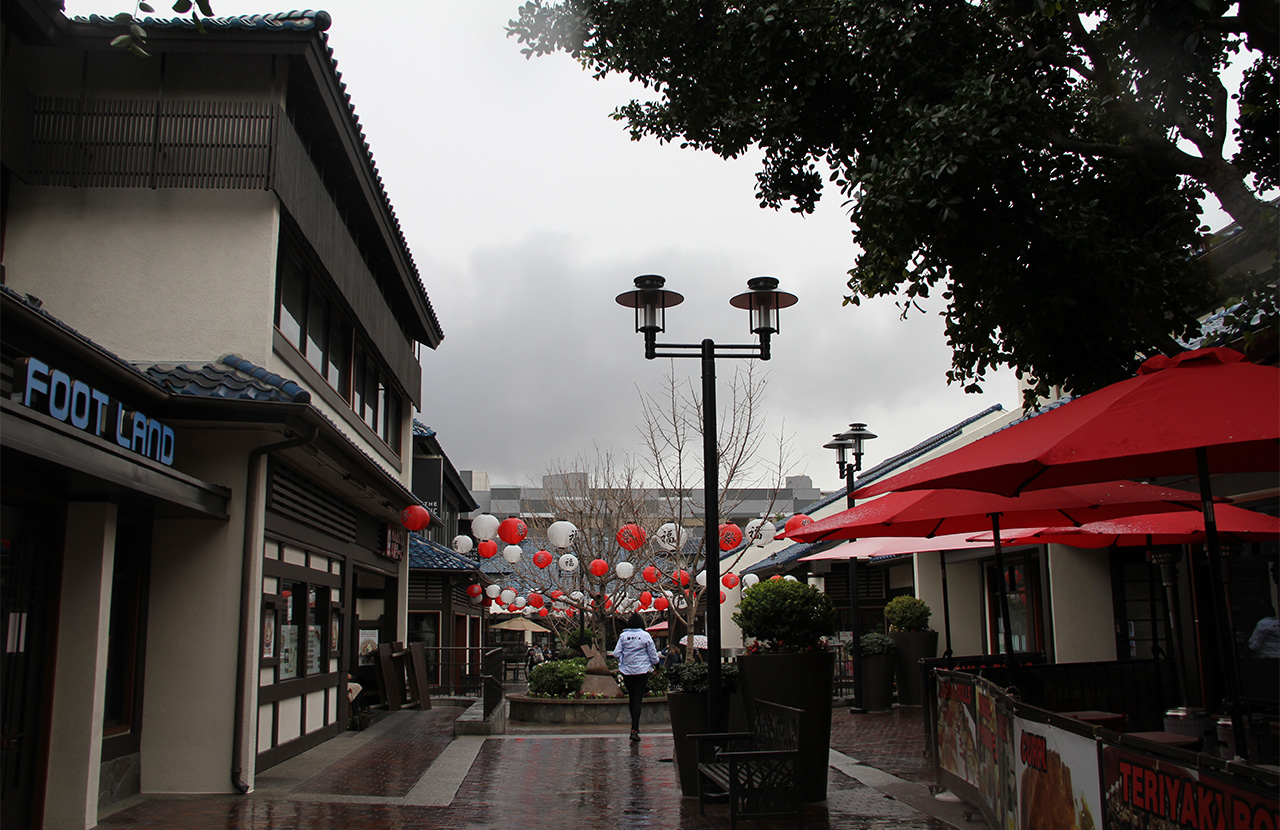
Little Little Tokyo
Wednesday, February 13, 2019, Japanese Village Plaza, 335 E 2nd Street
Japanese Village Plaza is usually bustling with visitors and citizens going in and out of stores, restaurants, and the supermarket, especially during lunch breaks. However, with the current rainy weather, it appears emptier than usual. With continued maintenance of subtle Japanese aesthetics, variety of Japanese food, and some modern stores such as Cafe Dulce and Honeymee, Japanese Village Plaza continues to be a trendy hotspot for Little Tokyo visitors.
— Kevin Nguyen
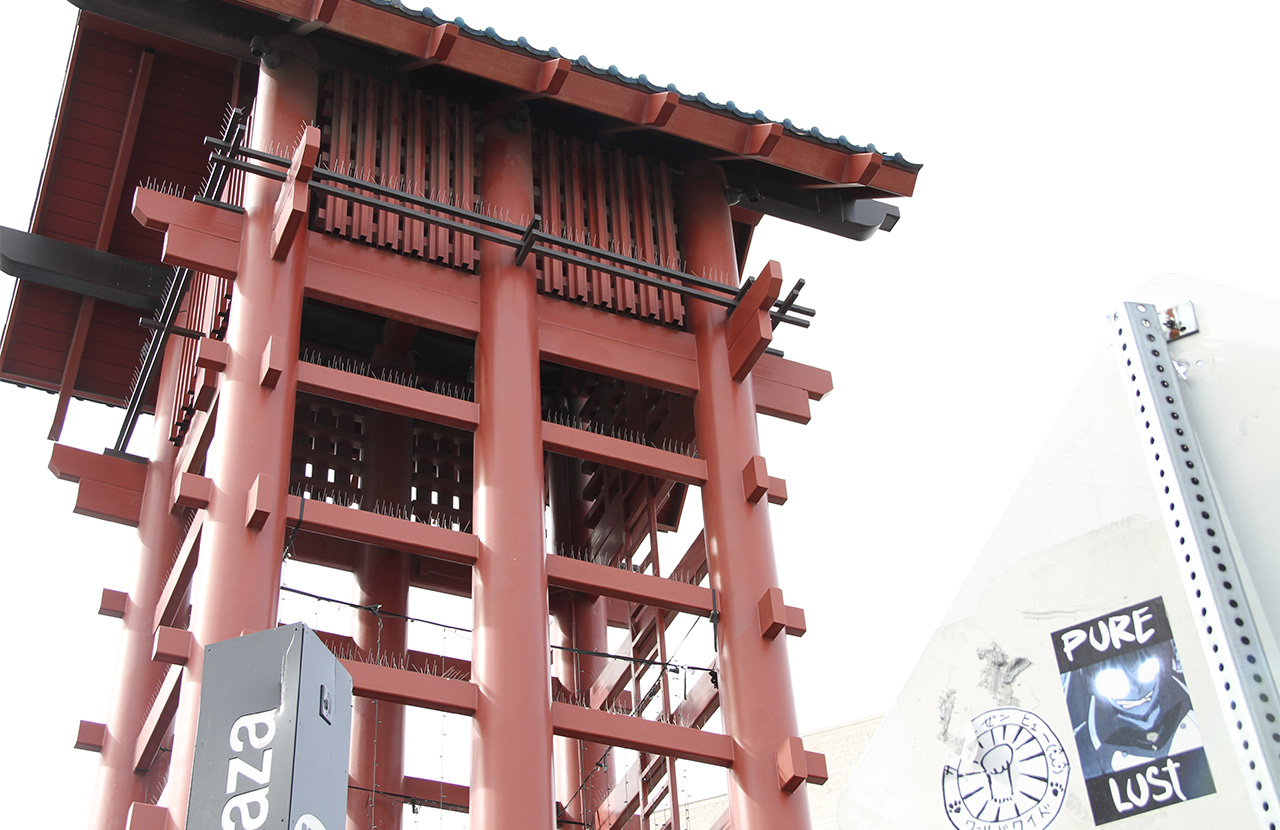
Pure Lust
February 19, 2019, Entrance to Japanese Village Plaza
This is at the entrance of the Japanese Village Plaza. I have been passing here every day during my time spent at Visual Communications. I was drawn to the juxtaposition between the celebration of tradition in Little Tokyo against the graffiti and stickers that also decorate the space.
— Mary McHenry
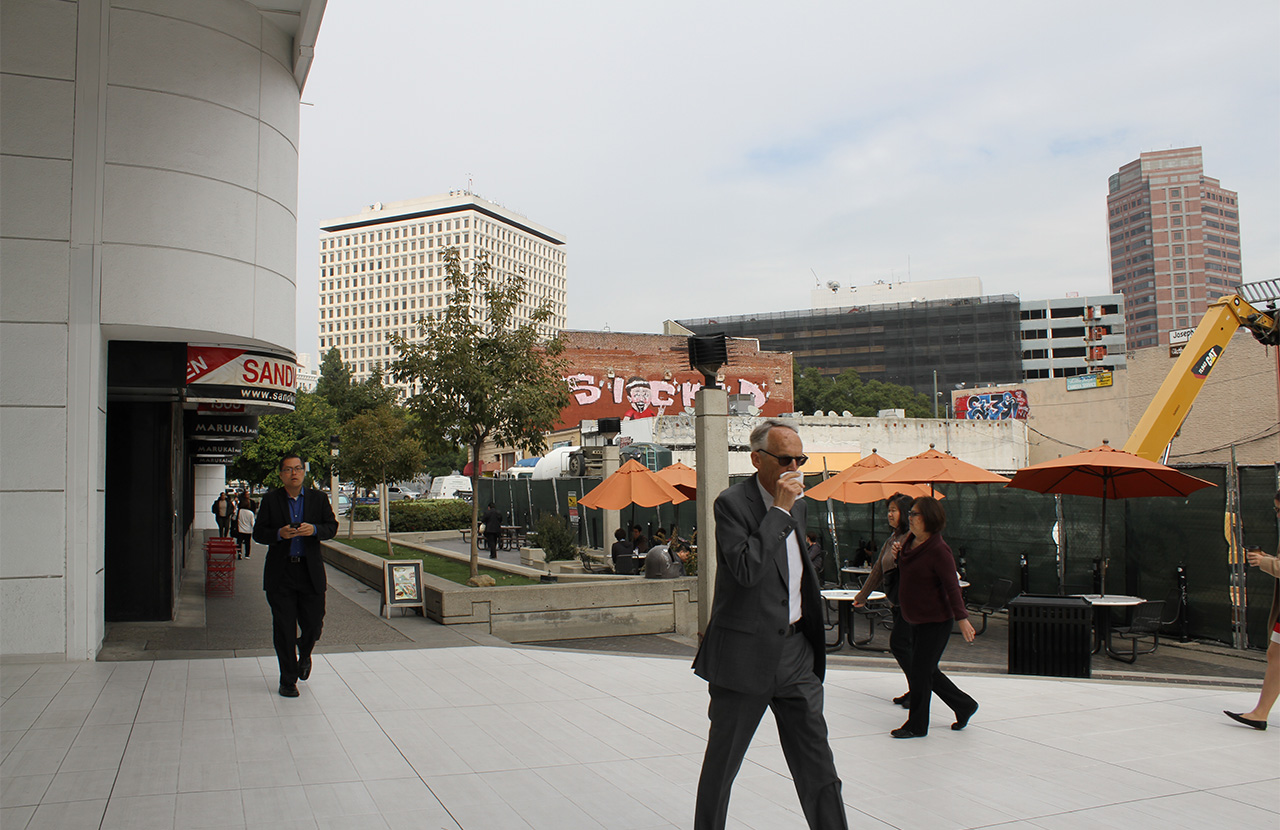
All Is Well?
February 27, 2019, Weller Court
After moving out to L.A. from Memphis, Tennessee, where I had been raised my entire life, I find myself taking note of the demographics of wherever I am — UCLA’s campus, Grand Central Market, and even Little Tokyo. I grew up being the only Korean American in my entire life around Caucasians, so I never consciously looked for diversity in the crowd until I moved to Los Angeles for college at UCLA. I enjoy parking my car close yet far enough to walk to my destination since I enjoy walking and people watching. In particular, Little Tokyo seems to be made up of mainly younger adults hanging out with their friends, tourist groups, Japanese elders from the nearby area, transient individuals, and Hispanic workers. In this picture, you’ll notice an older Caucasian male who is sharply dressed in business attire, two Asian Pacific American women, a few younger adults who are people of color in the background, and Mike Fong — the unofficial “Mayor of Chinatown.” I try to imagine their lives beyond where they are now: I like to create narratives for what these people (they’re running errands, going to a business meetings, or enjoying their lunch break.) Little Tokyo is bustling with many identities, however there are dangers to the Little Tokyo community in terms of redevelopment because all these communities have different interests. Family businesses that are owned by community members will be forced to close, families and elders will have to move when prices in certain Little Tokyo will rise, and etc.
— Sharon Lee
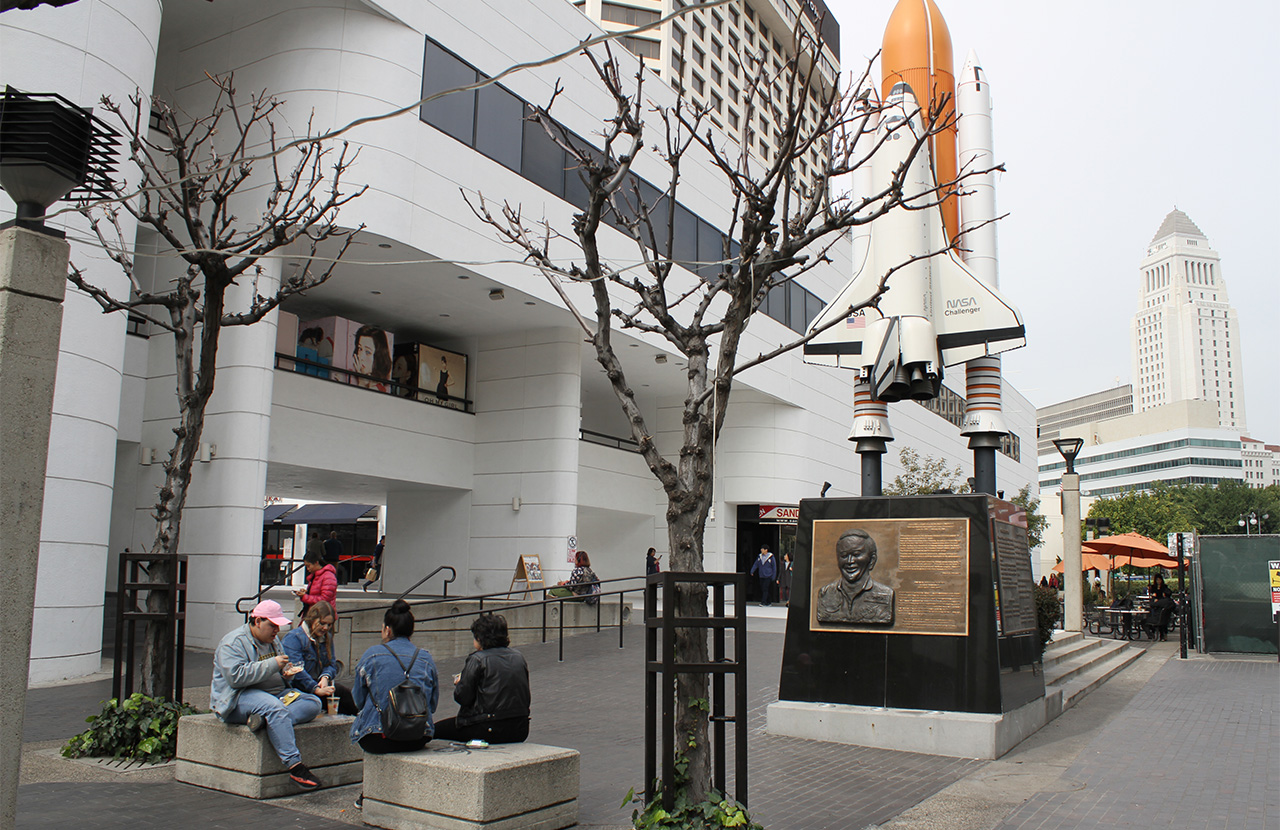
Recess Snack Time
February 27, 2019, Weller Court
This court became my saving grace when I needed to get something last minute for our potluck. But amidst all the frenzy of finding some food, I found myself getting lost in nostalgia as I was surrounded by memories of sharing and fighting over snacks during recess.
Context: Until the 1970s, there used to be the Sun Hotel in Little Tokyo that provided affordable housing for the elderly residing in Little Tokyo. Also in this area was the Sun Building, home to many cultural and community offices in the Japanese American community, including VC. However, with plans of redevelopment mainly with the construction of a large upper class hotel, the Sun Hotel was demolished and the New Otani Hotel and Garden and the Weller Court were developed in their place. This first round of gentrification, discussed extensively in VC’s documentary production SOMETHING’S ROTTEN IN LITTLE TOKYO (1977), set precedent for what is happening today in Little Tokyo with the construction of the new Metro system, making housing more expensive and pushing out more local businesses.
— Carrie Hsu
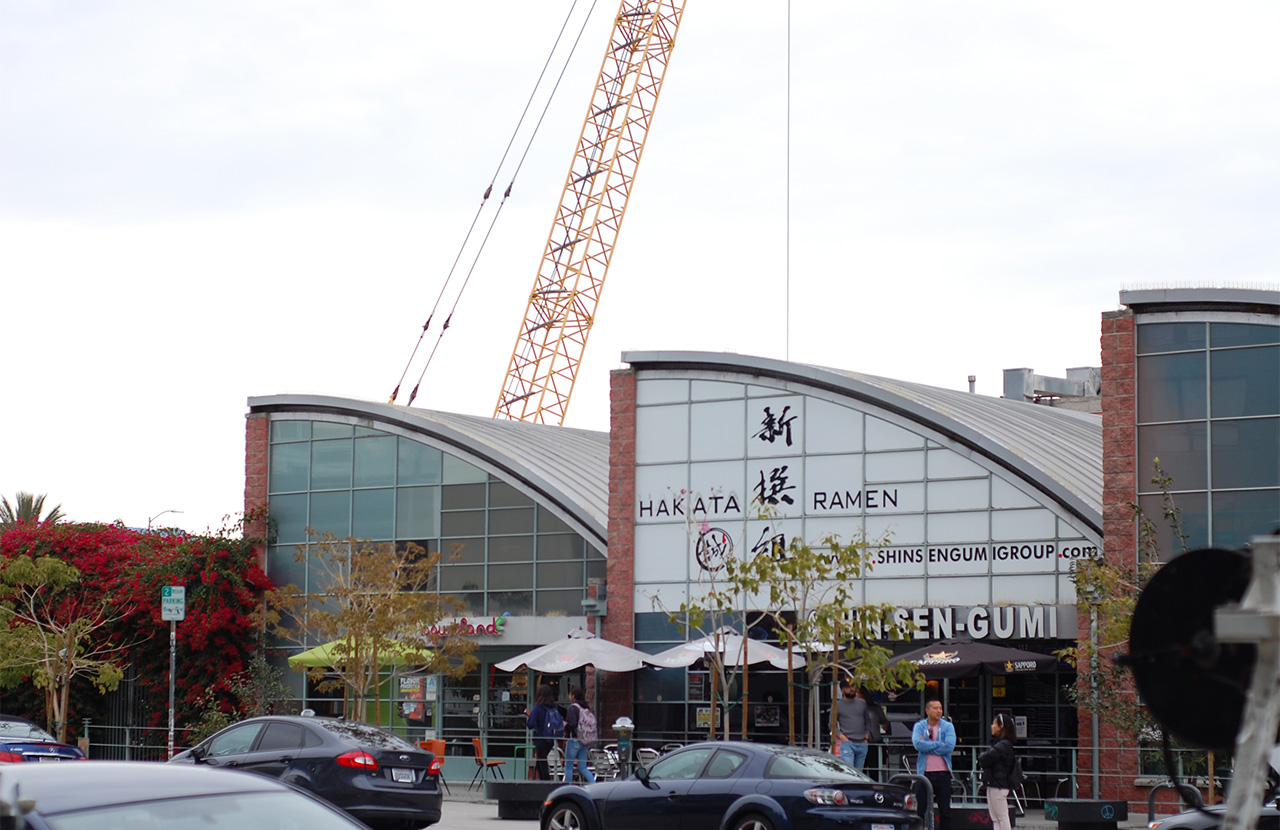
Greed
February 19, 2019, S. Central and E. 2nd Street
This development was supposed to house the Little Tokyo Budokan, a recreational community center and gathering place for the Japanese American and local community. However, the person who owned this chunk of land wouldn't sell to the Little Tokyo Service Center and sold it instead to make way for a Home Depot.
— Kevyn Lorenzana
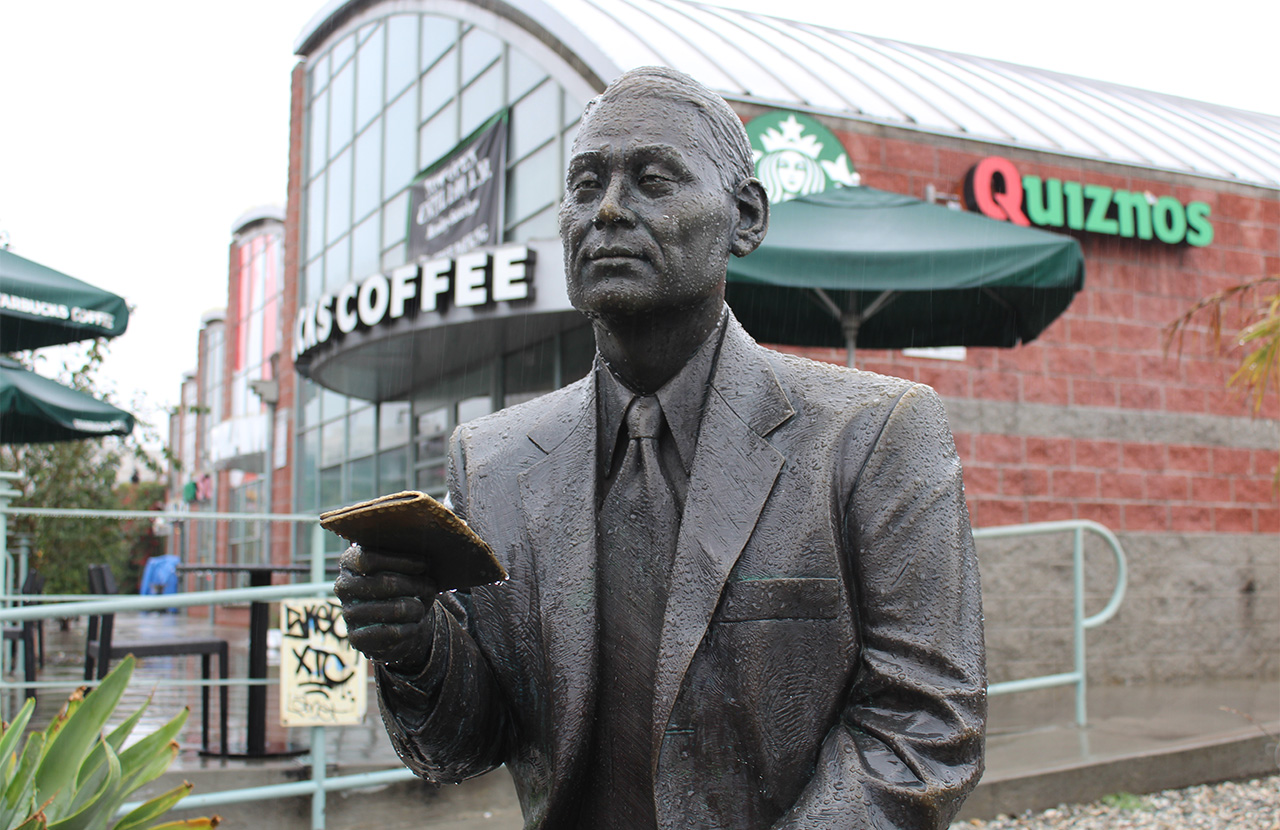
Chiune Didn’t Offer This
March 6, 2019, Office Depot Structure
Regarded as the “Righteous Gentile,” for saving the Jews during the Holocaust, Chiune Sugihara was a kind-hearted Japanese government official who served as the vice chancellor for the Japanese Empire in Lithuania. Though he served to help those in need, this picture has a stark contrast. American franchise restaurants, Quiznos and Starbucks, are pictured behind the statue of Sugihara, and underscore the current landscape in Little Tokyo and many other ethnic enclaves in Los Angeles. Instead of small businesses run by the community members, we see large corporations running the food scene in this shopping center.
— Sharon Lee
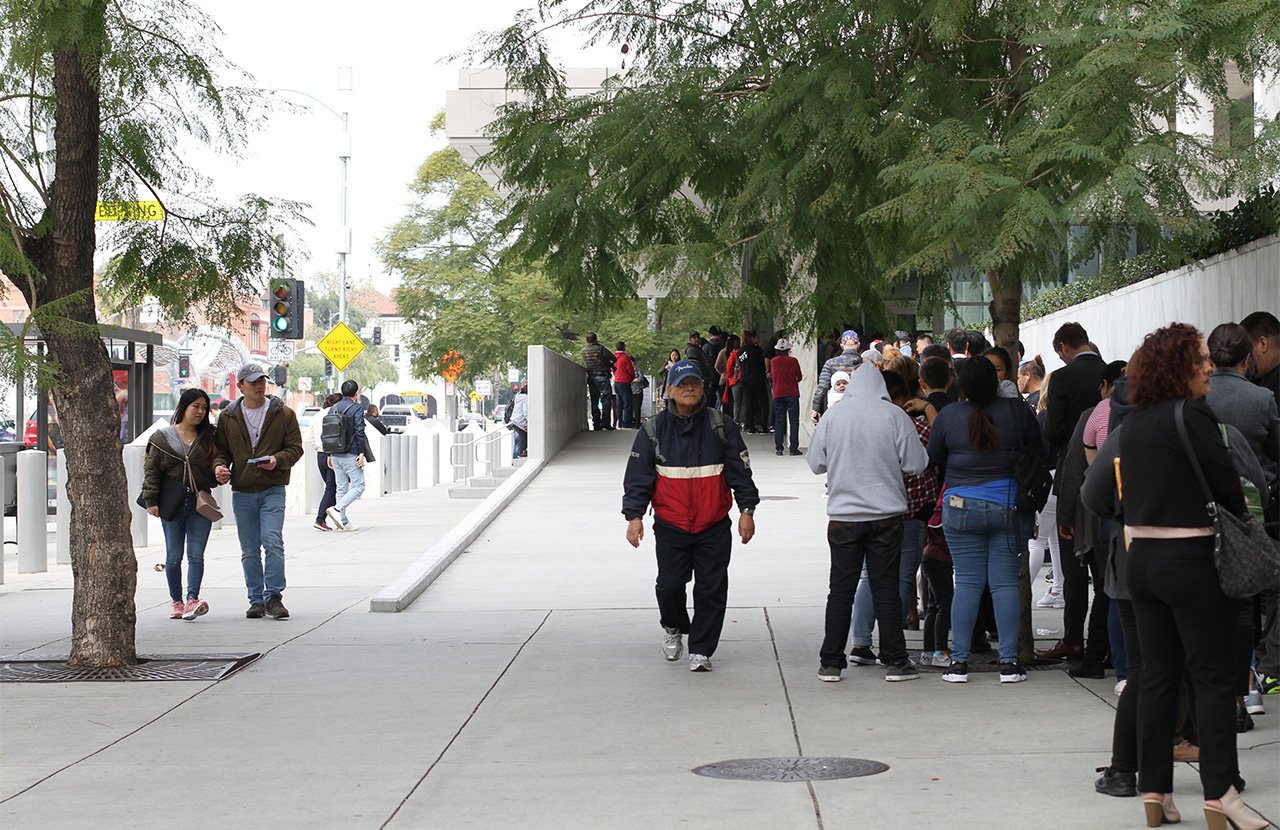
A Day at the Federal Building
March 4, 2019, 300 N. Los Angeles Street
Every time when I pass by the Federal Building, there is always a long line of residents waiting to be serviced. I wondered how long they would need to wait in line given the sporadic government shutdowns nowadays and how effectively they are being served. I was surprised by the various makeup in age, race, and ethnicity given that this is a snapshot of a daily function within the lives of today’s residents.
— Kevin Nguyen
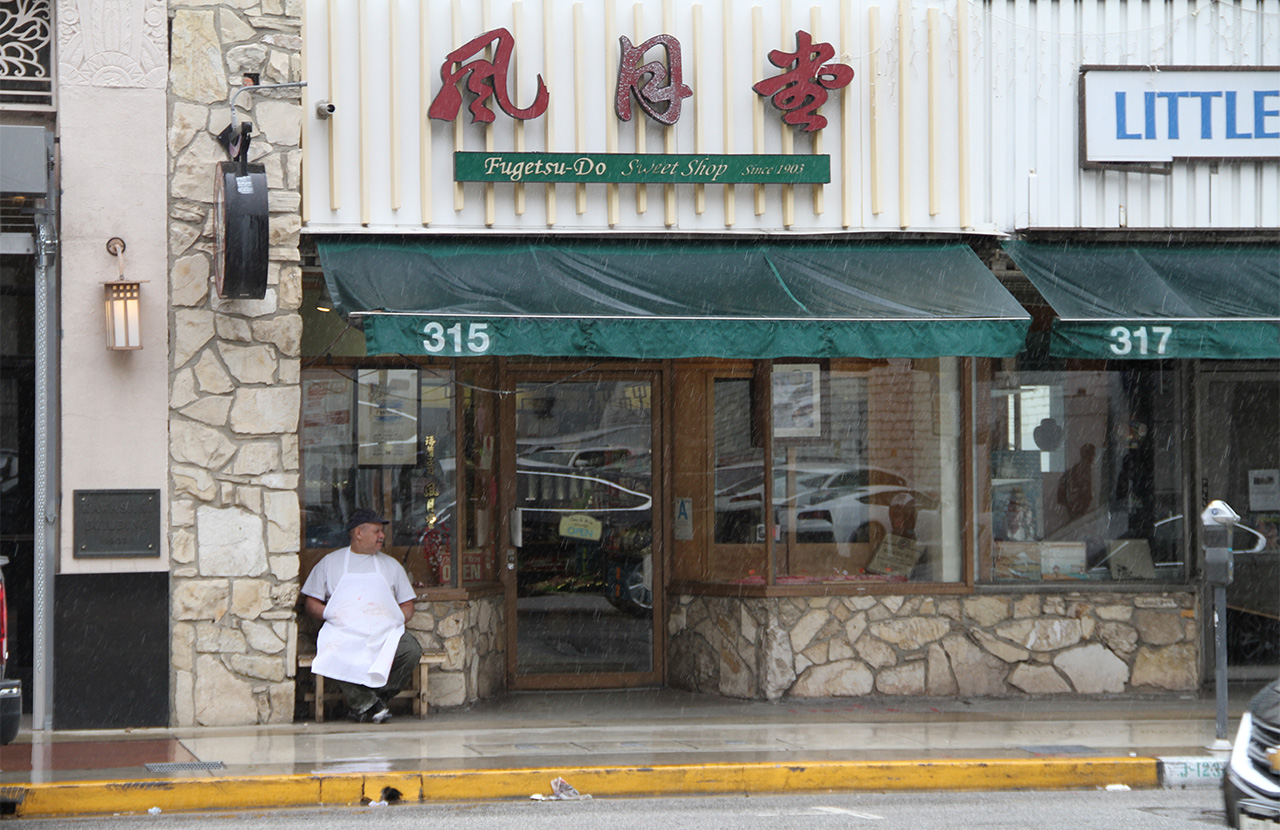
Fugetsu-Do Sweets Shop
February 13, 2019, 315 E 1st St
When I first saw this shop, I didn't think much of it since it wasn't particularly flashy or well known outside Little Tokyo. But I always remembered a stout man that sat in front of the store almost like a gatekeeper to this humble abode.
Context: This shop is one of the oldest businesses in Little Tokyo, with its founder (Seiichi Kito) being a part of the Issei generation. Seiichi Kito brought his family (his wife and their six children) to the U.S. back in 1903 and used that human capital to help run the business. Additionally, social capital was strategically used as he used to sell his sweets whilst delivering the Rafu Shimpo, a Japanese English language newspaper based in Little Tokyo that is still active today. Then with the signing of Executive Order 9066, they had to leave. However, after internment was over, they worked hard to get their storefront back with the help of other Japanese families. Now, there are less customers than before but they rely on the local community to buy sweets from them for Japanese holidays like Girl's Day (3/3) and Boy's Day (5/5). Furthermore, they have intentionally decided not to remodel their establishment as it not only holds historical value for the Little Tokyo community but also holds many nostalgic memories of how Little Tokyo used to be.
"Everything I remember about Little Tokyo is gone - except Fugetsu-Do. Nothing has changed; the store is just as I remembered it ..." — Anonymous
— Carrie Hsu
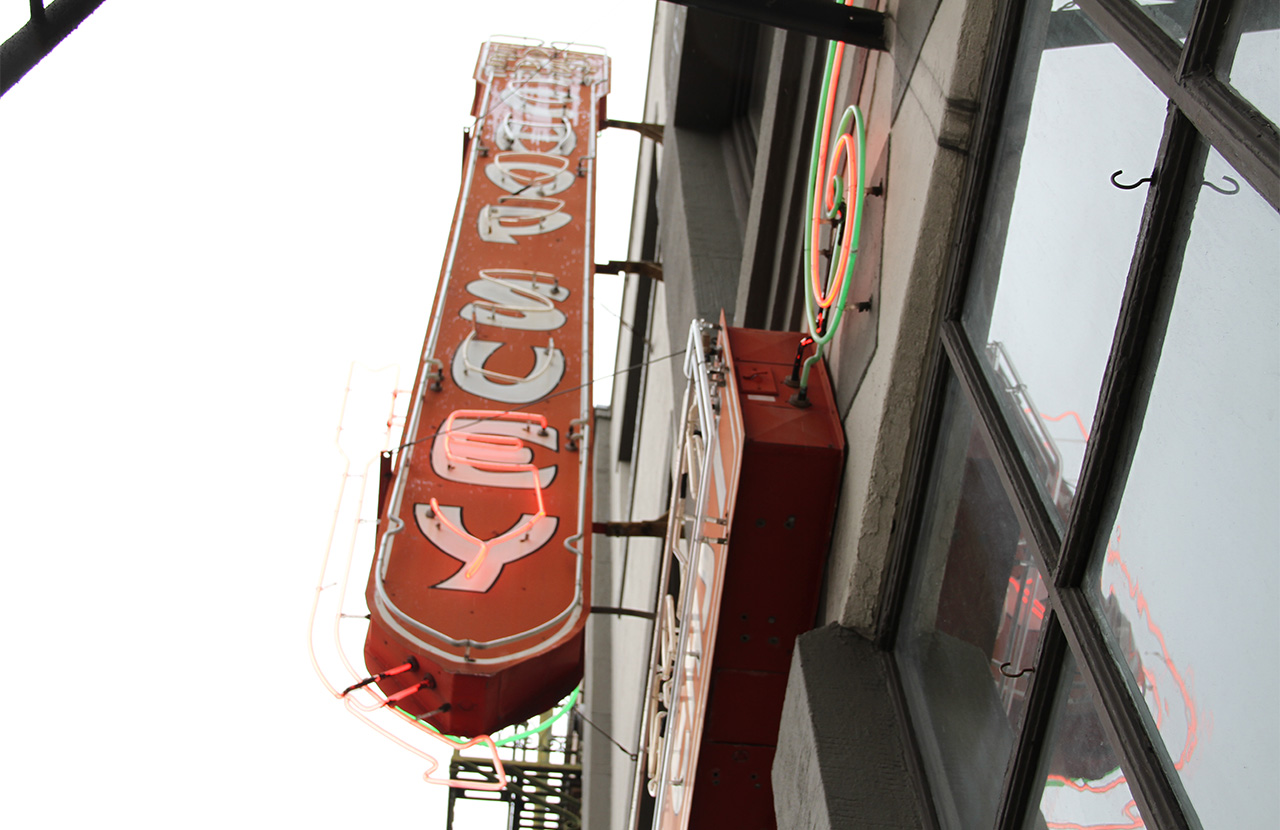
Look Up Before It’s Far Gone
February 20, 2019, Far East Café
Established in 1935, the Far East Café has been featured in countless photos during historic rallies during the Asian American movement and in candid photos of many families and friends.
Far East Café was opened by the Ma family, who claimed to have a Chinese-Japanese restaurant. The recipes from Far East consisted of such delicacies as “Almond Duck”, “Sai Fun”, and “Hom Yu”. In fact, the recipes at Far East were considered to be comfort food for many community members. However, these recipes were passed down from family members and lost after the 1994 Northridge Earthquake. The building was was condemned, and the Mas left the restaurant business without passing down their recipes. The building was re-established as a low-income housing establishment, and today houses the Far East Lounge, which occupies the former Ninomiya Photography Studio. Even though it became a lounge that hosted wellness classes, a technology center for older API folk, and community organizing meetings, we need to be able to preserve memories and tangible objects such as Far East before they disappear.
— Sharon Lee
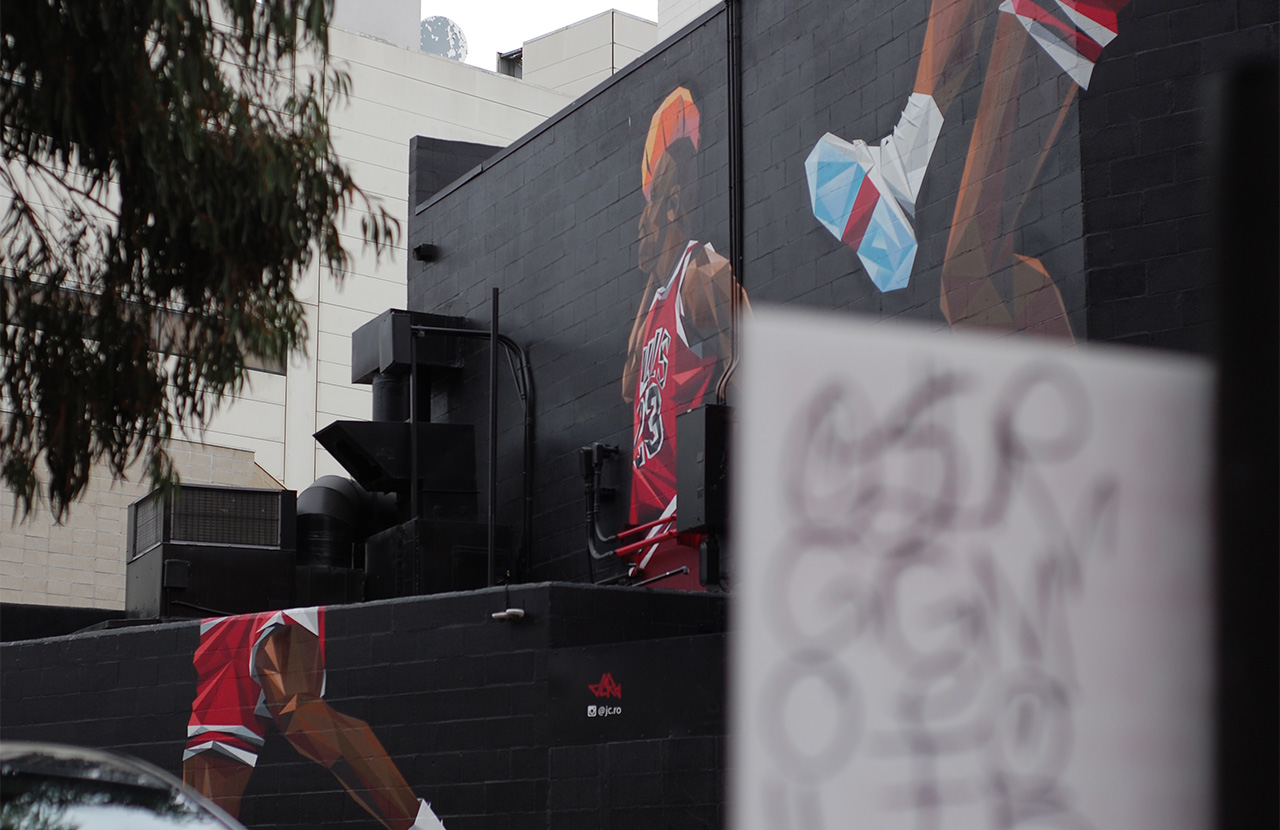
Cool Art For What?
February 19, 2019, Asuza Alley and San Pedro Street
This is the back wall of the Shoe Palace store in Little Tokyo, sitting across from the Aratani Theatre. This wall has no significance to the history of Little Tokyo, but it does bring a young aesthetic for tourist and fashion idols. To me, I regard this as a nuisance for Little Tokyo’s iconic position in history.
— Kevyn Lorenzana
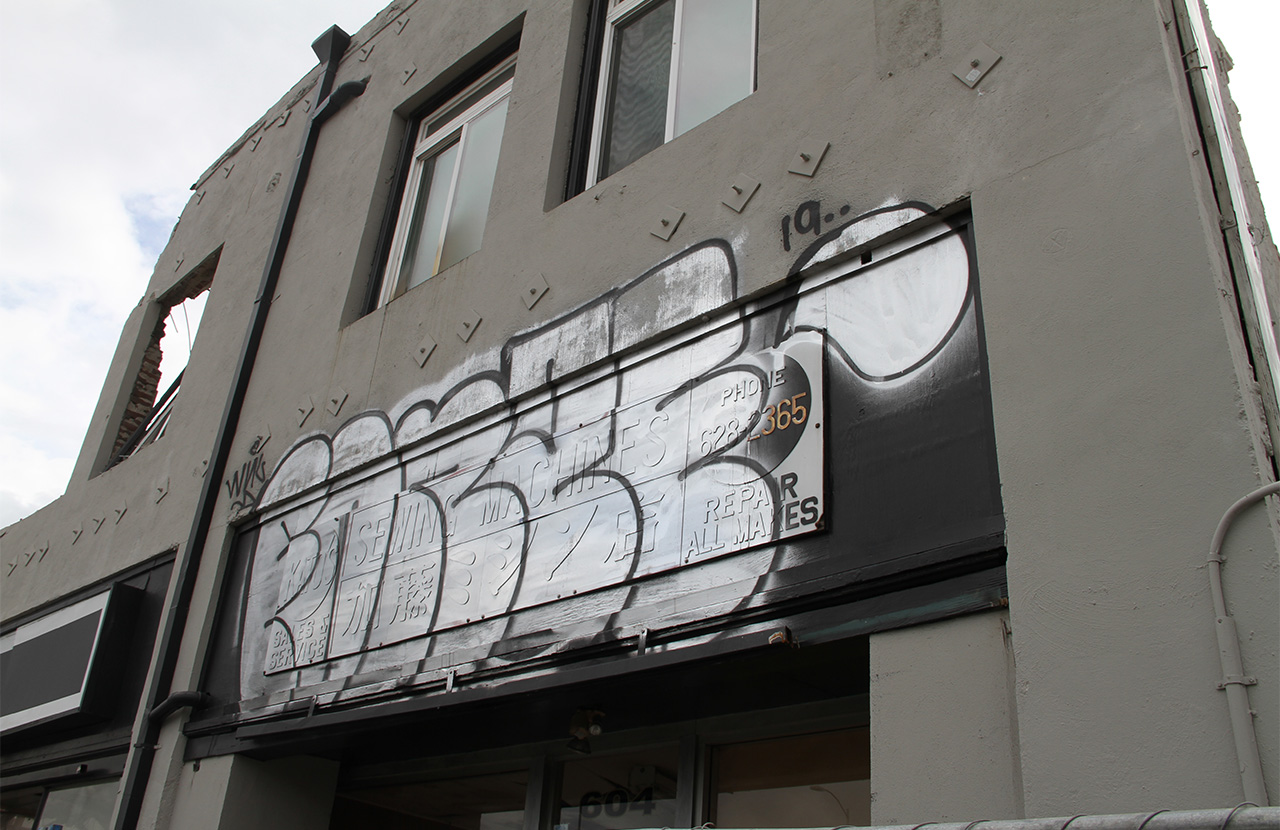
Remainder/Reminder
February 15, 2019, Kato’s Sewing Machine
Kato’s Sewing Machine Company had their 60th anniversary on January 23rd, 2016. On the day I made this picture, the building was in its final stages of being torn down. Founded by Frank Kato, the store provided excellent customer service on any sewing machine needs for two generations. The storefront was the last part of the building to be demolished.
— Jason Ordonio
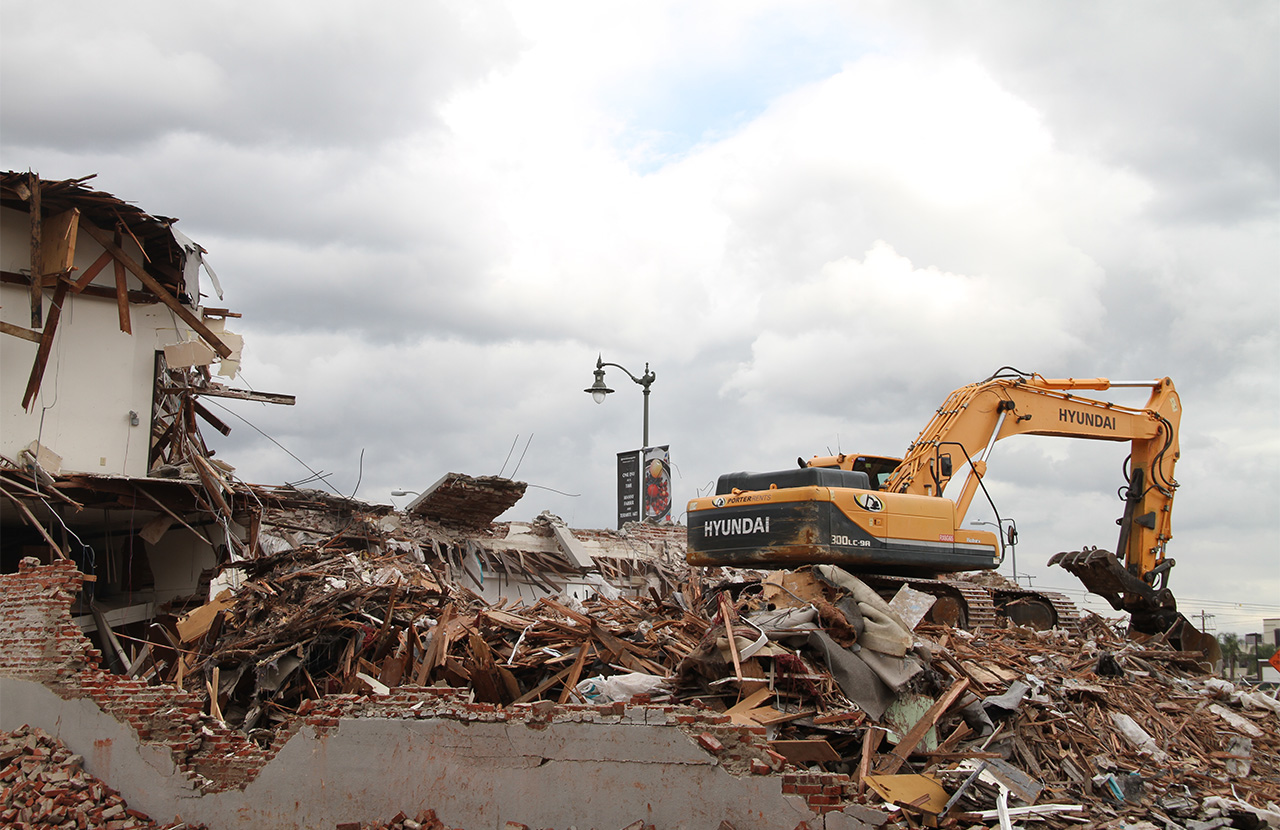
Erase
February 15, 2019, Kato’s Sewing Machine
The rear view of the Kato’s Sewing demolition. Right across the street, the Metro line is being extended. The whole plaza this store was on is all closed off now, notably the Little Tokyo Car Wash.
— Jason Ordonio
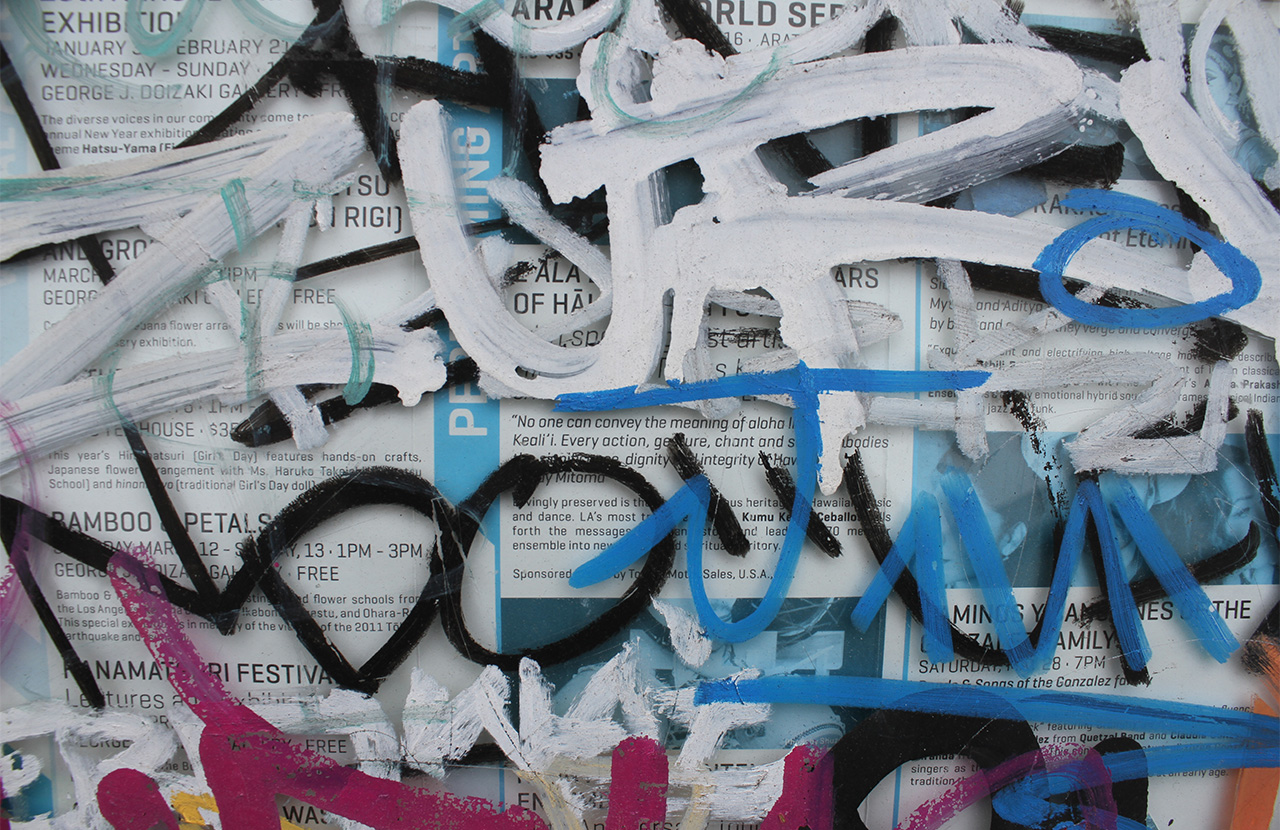
History: Rewritten
March 1, 2019, Entrance to Aratani Theatre
This was on a podium at the entrance to the Aratani Theatre. Under the paint, the flyer displays the various community events that are held in the Little Tokyo area. I reflected on the purpose of words, here within the flyer and within the vandalism above.
— Mary McHenry
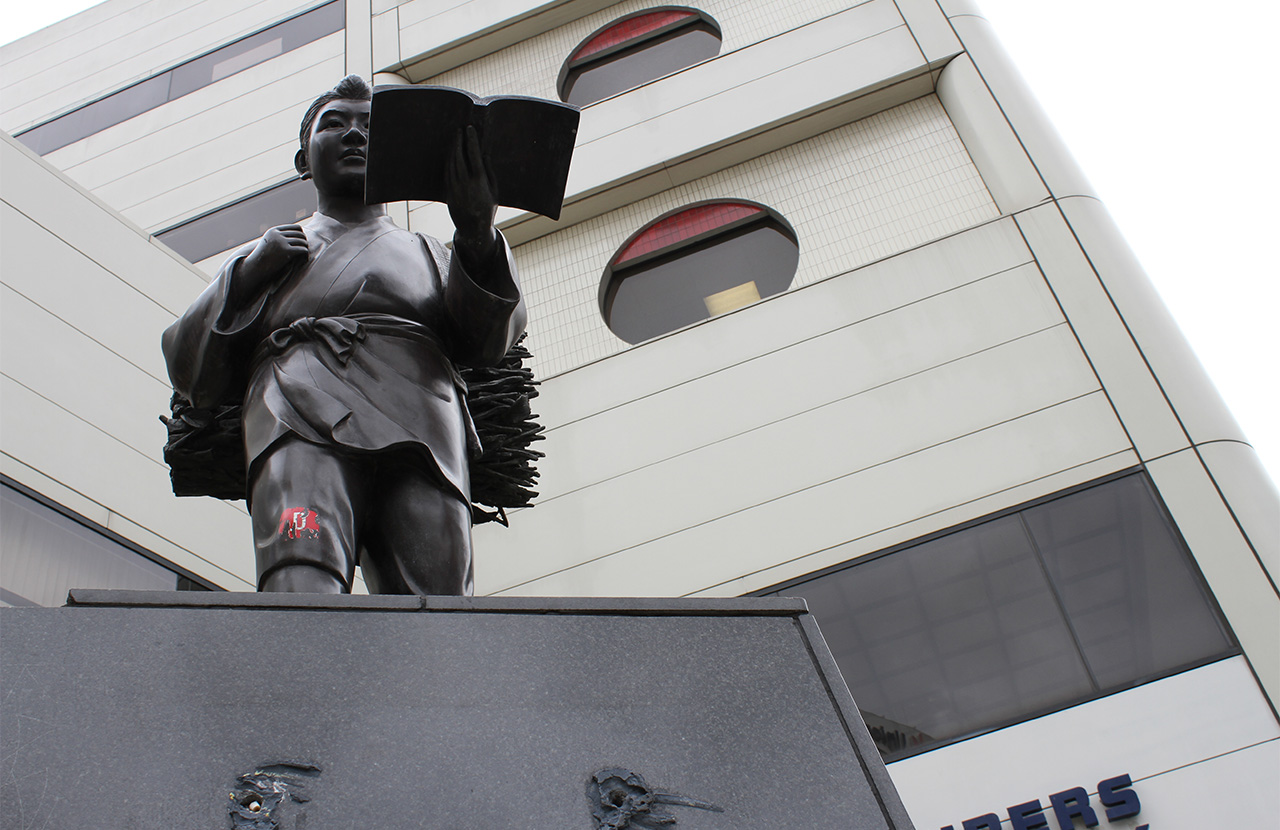
Man With No Title
March 1, 2019, Corner East 2nd and S. San Pedro Sts.
This is a statue that site on the corner of East 2nd and San Pedro. The work has signs of a plaque that formerly was attached, but is now gone. Many of the plaques in the area were stolen from the community for the copper.
— Mary McHenry
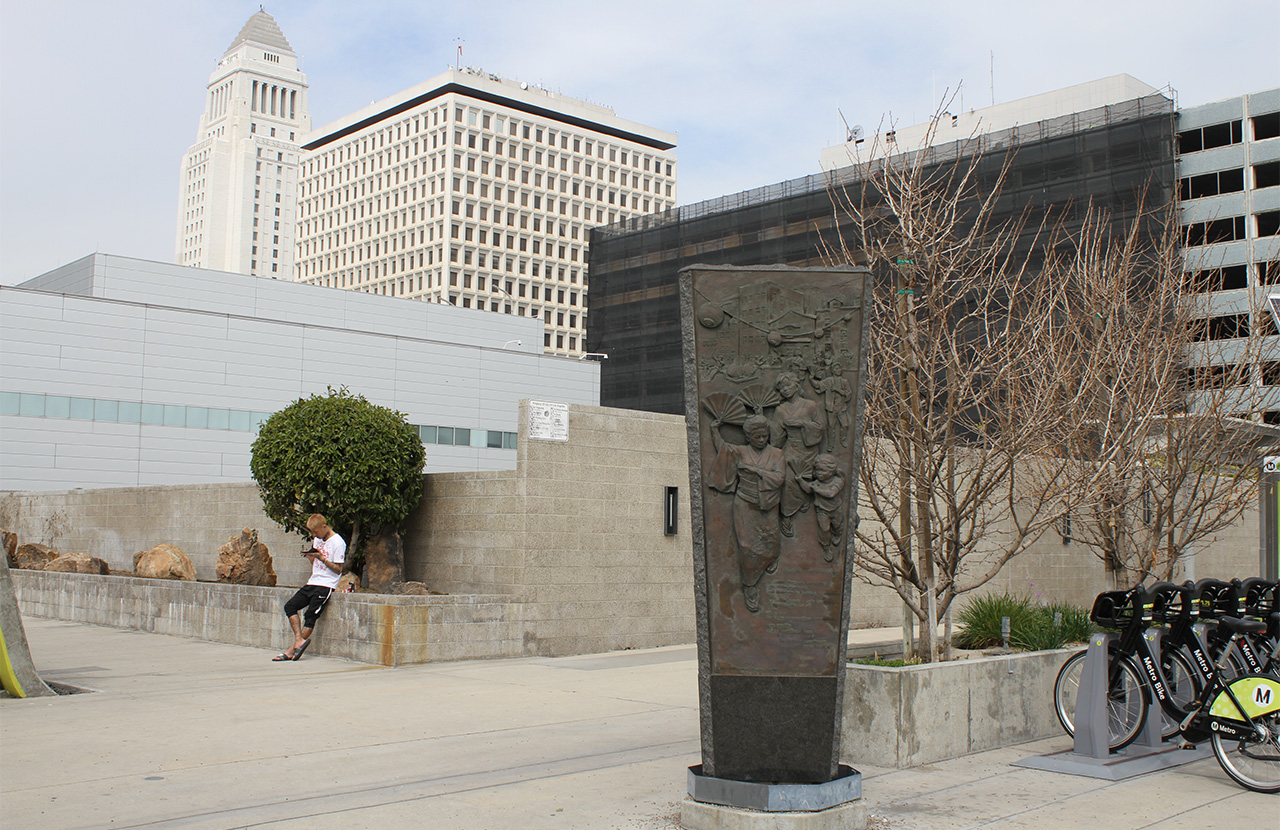
From Injustice to Redress
February 27, 2019, John Aiso Parking Lot
This parking lot is one of the few affordable parking structures in the vicinity so it's our go-to parking garage. Little did I know that the sculpture we passed by everyday was created to memorialize the civil violations that the Japanese American community was subject to. Ironically, we see the tearing down of the surrounding buildings, almost overshadowing the progress we've made and concreting the fact that the journey is far from over.
Context: As part of "The California Japantown Landmarks Project," this landmark in Little Tokyo was first created in 2006 and is one of three bronze sculptures that portray the stories of the Issei generation. Created by artists Louis Quaintance and Eugene Daub, their intent was to “educate individuals about the history of our communities — to the fact that they are not just tourist destinations but are real neighborhoods where our communities were born, where our two cultures first met, our first businesses were developed and where civil liberty violations in our American history took place.” Moved to the John Aiso parking structure in 2011, it is ironic to see that there are signs for demolition behind the sculpture, implying that these violations of inaccessibility to affordable housing are still occuring today.
— Carrie Hsu
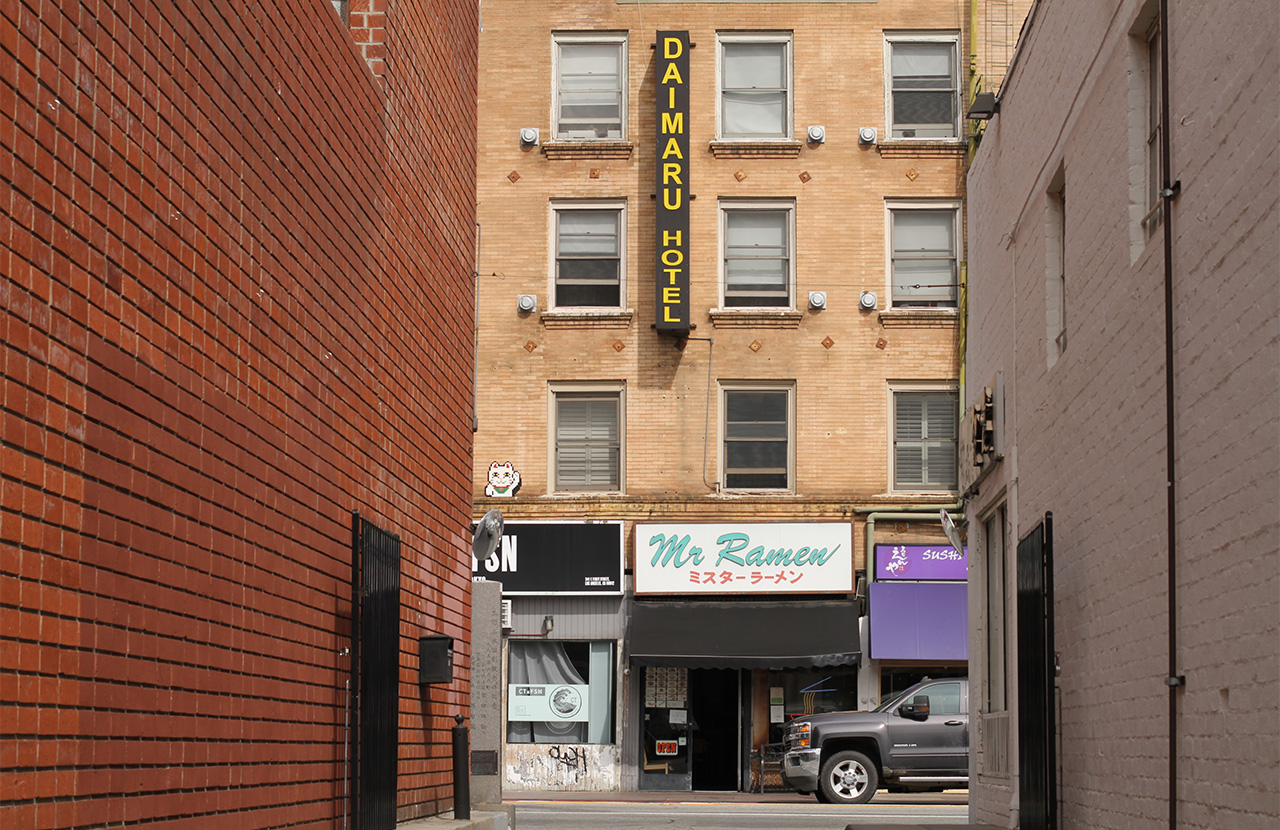
In Between the Cracks
March 4, 2019, E. First Street from the Alleyway of Koyasan Buddhist Temple
I was walking out of the Koyasan Buddhist Temple when I encountered a fixed linear vision of Daimaru Hotel and Mr. Ramen. My filtered view of E. First Street allowed me to take note of the structural set up of there being a hotel on top of many small shops along with the small pixelated Maneki Neko (Lucky Cat) art piece. In May 2018, four artists were selected to be part of the inaugural +LAB Artist Residency and resided in Daimaru Hotel as a means of helping local residents and small businesses address the gentrification affecting Little Tokyo through various disciplines of visual art.
— Kevin Nguyen
CURATORIAL STATEMENT
After spending Winter Quarter 2019 at Visual Communications, we witnessed firsthand the realities of Little Tokyo today — city renovations, homelessness, displacement of Asian Pacific Islanders, loss of cultural significance, and much more. We reflected on how we, as patrons, sow and reap from this historic community: the first seeds which were planted in 1885 to the roses and thorns that have bloomed since. WHAT DO WE SEE is a reflection on Little Tokyo’s past and present, and the deeper shifts that are consequence of physical changes. We remember the importance of understanding and analyzing root causes of the issues we face today in order to draw connections to all the realities faced in Little Tokyo. Not only does Visual Communications provide authentic stories of Asian Pacific Islanders; the organization advocates for community members through providing historical archives materials including photographs, newspaper articles, audio, and other forms of media to engineer a more authentic narrative of our people.
Today, we give to you: What We See in Little Tokyo.
Asian American Studies 140 SL:
Carrie Hsu
Sharon Lee
Mary McHenry
Kevin Nguyen
Jason Ordonio
Asian American Studies 185-1 Capstone:
Kevyn Lorenzana


